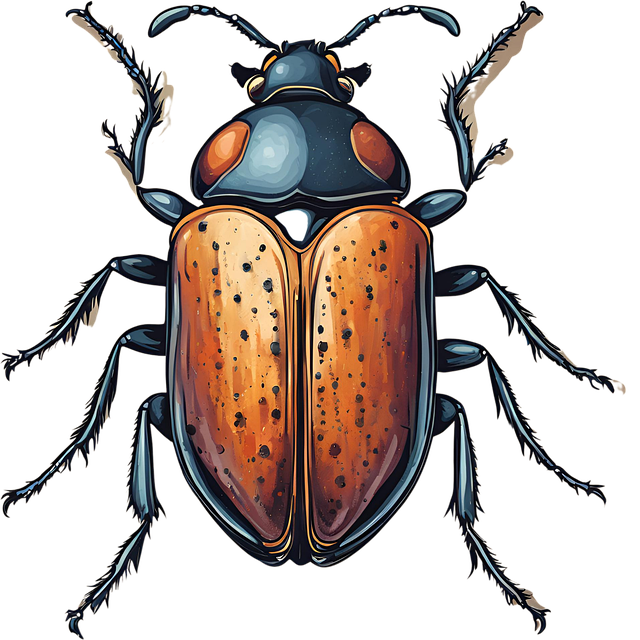Integrated Pest Management (IPM) offers a comprehensive, environmentally friendly approach to residential pest control, prioritizing health and safety while minimizing reliance on harsh pesticides. This method includes strategies like trapping, monitoring, heat treatments, and strategic applications for common pests like rodents, termites, bed bugs, and ants. Shifting towards eco-friendly home pest solutions prevents environmental harm, promotes biodiversity, and provides effective control without toxic chemicals. Choosing reputable companies specializing in these non-toxic practices ensures a safe, healthy living environment.
In today’s world, effective and safe residential pest control is a top priority for many homeowners. Integrated Pest Management (IPM) programs offer a comprehensive, eco-friendly approach to dealing with common pests like rodents, termites, and bed bugs. This article explores the benefits of green pest solutions, provides insights into typical domestic pest issues and their treatments, and guides you in selecting the best home pest control services for your needs. Discover how IPM can ensure a comfortable, pest-free living environment without harmful chemicals.
Understanding Integrated Pest Management (IPM) Programs
Integrated Pest Management (IPM) programs are a holistic approach to residential pest control services, focusing on long-term prevention and minimal environmental impact. Unlike traditional methods that rely heavily on chemical pesticides, IPM combines various strategies such as habitat manipulation, mechanical controls, biological agents, and targeted applications of safer chemicals. This eco-friendly home pest solution aims to reduce the use of harsh chemicals and eliminate pests humanely.
By implementing IPM, homes can effectively manage common pest issues like termites, rodents, bed bugs, and ants while ensuring the health and safety of residents and the environment. Rodent control for homes involves trapping and exclusion methods rather than toxic bait. Termite treatment for houses may include monitoring stations and baits placed strategically to disrupt termite colonies without damaging non-target organisms. Bed bug extermination for homes utilizes heat treatments or targeted pesticides applied by professionals, ensuring minimal disruption to residents’ lives.
Benefits of Eco-Friendly Home Pest Solutions
The shift towards eco-friendly home pest solutions offers numerous benefits for both residents and the environment. Traditional pest control methods often rely on harmful chemicals that can persist in the home, potentially causing health issues and environmental pollution. In contrast, integrated pest management (IPM) programs focus on preventive measures, non-toxic deterrents, and targeted treatments to eliminate pests humanely. By adopting eco-friendly practices, residential pest control services can provide effective home pest control without compromising indoor air quality or contributing to water and soil contamination.
These solutions encompass a range of methods, including rodent control for homes through non-lethal traps, termite treatment for houses using natural repellents, and bed bug extermination for homes that leverages heat treatments or specialized cleaning techniques. Even common ant control services can be enhanced with organic baits and mechanical means, reducing the need for toxic chemicals. Such approaches not only ensure a healthier living environment but also promote biodiversity by minimizing harm to beneficial insects and other wildlife.
Common Residential Pest Issues and Their Treatments
Residential areas often face a range of pest issues that can impact the health and comfort of homeowners. Common pests like rodents, termites, bed bugs, and ants require effective yet safe solutions to manage their presence. Rodent control for homes is essential to prevent damage caused by these intruders and potential spread of diseases. Termite treatment for houses is critical, as these insects can cause significant structural damage over time.
For those dealing with bed bug infestations, professional bed bug extermination for homes is recommended due to their resilience and ability to hide in hard-to-reach areas. Eco-friendly home pest solutions are increasingly popular among homeowners seeking non-toxic methods of pest control for houses. Ant control services play a vital role in managing these persistent pests that can disrupt daily activities and even cause allergic reactions in some individuals.
Choosing the Right Home Pest Control Services
When it comes to safeguarding your home against pest infestations, selecting the right residential pest control services is paramount. It’s crucial to opt for a reputable company that offers a comprehensive range of eco-friendly home pest solutions tailored to meet your specific needs. Look for professionals who provide diverse services such as rodent control for homes, termite treatment for houses, bed bug extermination for homes, and ant control services. This ensures a holistic approach to pest management, addressing any potential issues before they escalate.
Researching and reading reviews can help guide your decision. Choose companies that prioritize safety, use eco-friendly products, and offer guaranteed results. Additionally, inquire about their methods, ensuring they align with your preferences for non-toxic, integrated pest management (IPM) practices. Selecting the right home pest control partner will not only protect your property but also contribute to a healthier living environment for you and your family.
Integrated Pest Management (IPM) offers a comprehensive and eco-conscious approach to residential pest control. By combining various strategies, from preventive measures to targeted treatments, homeowners can effectively manage pests without resorting to harsh chemicals. This article has explored the benefits of eco-friendly home pest solutions, common issues like bed bugs, ants, and rodents, and guided readers in selecting suitable pest control services for their homes. Adopting IPM practices not only protects families’ health but also preserves the environment, ensuring a safer and healthier living space.
